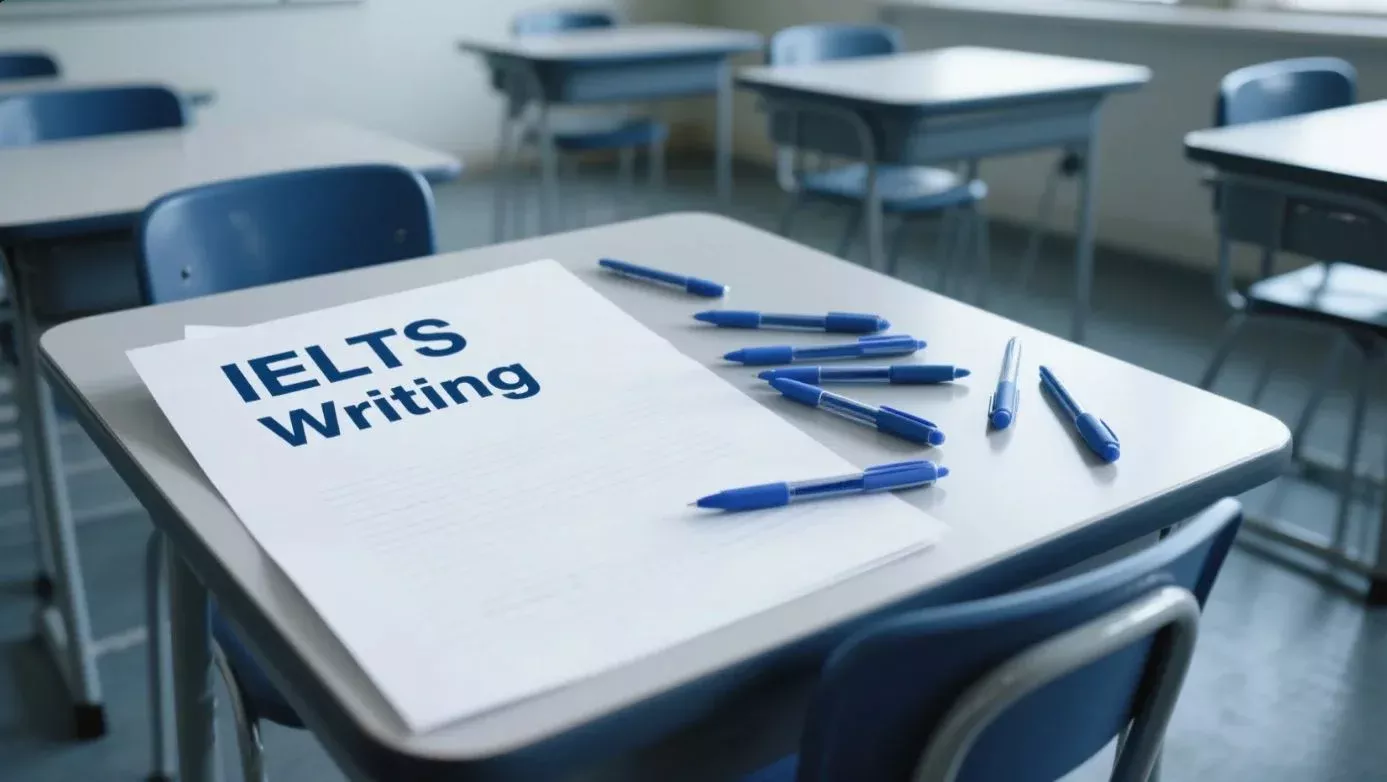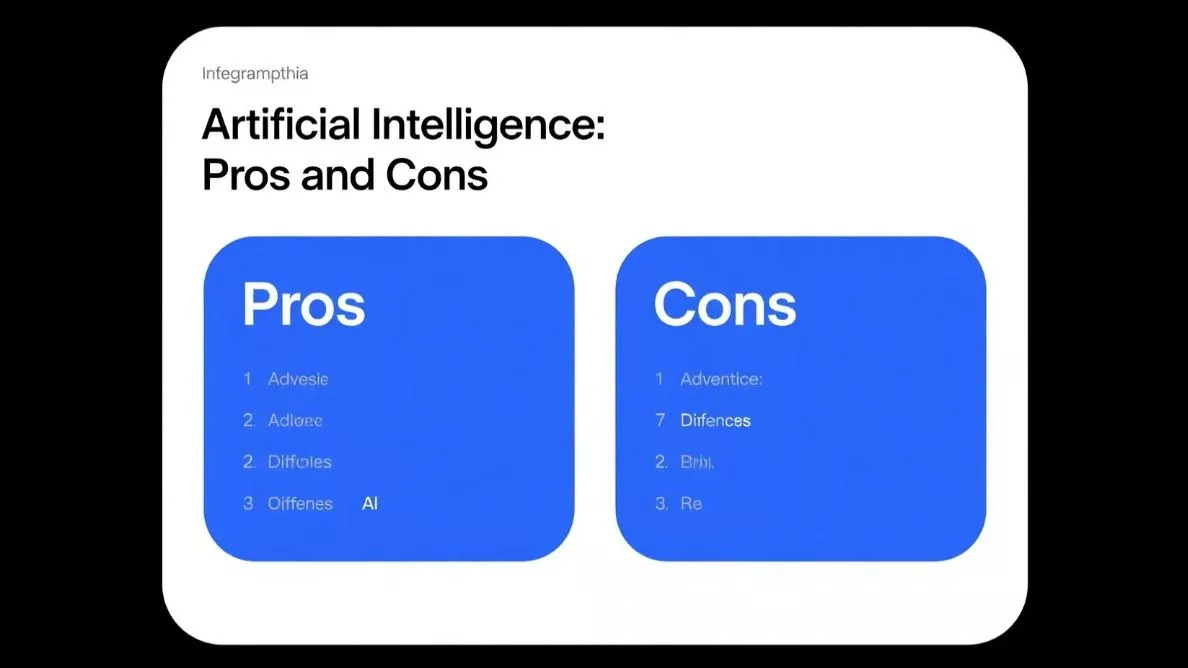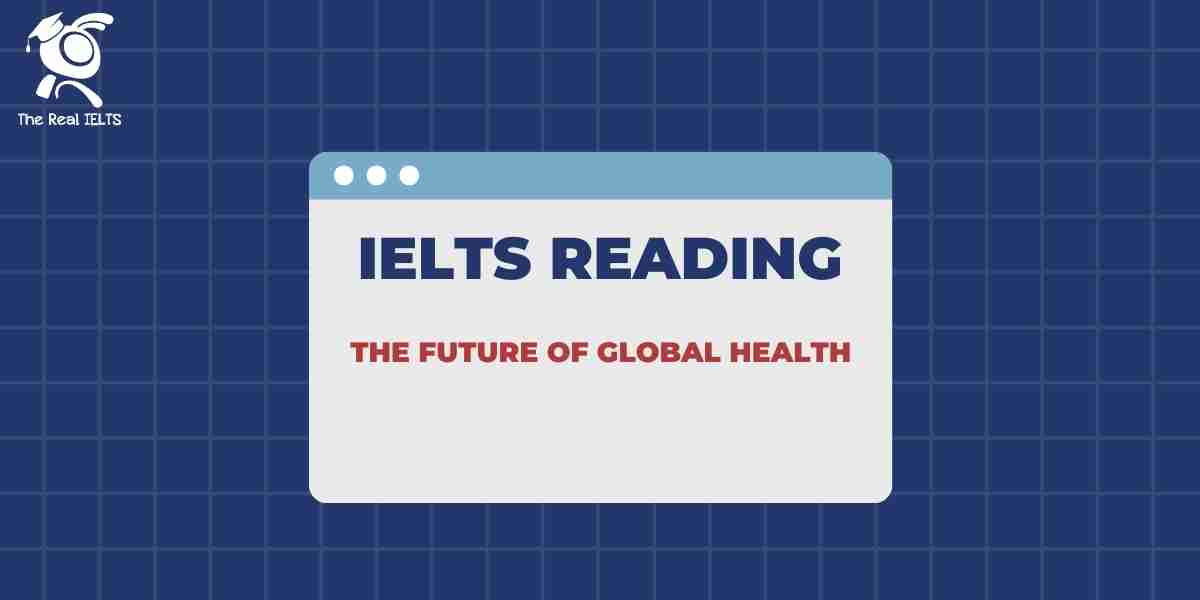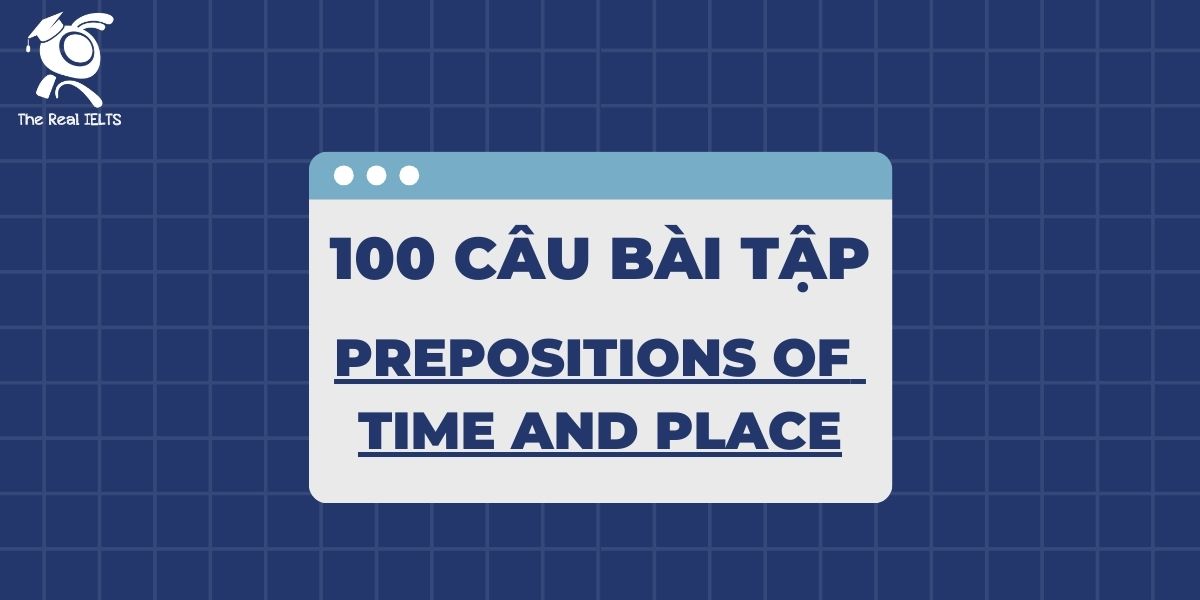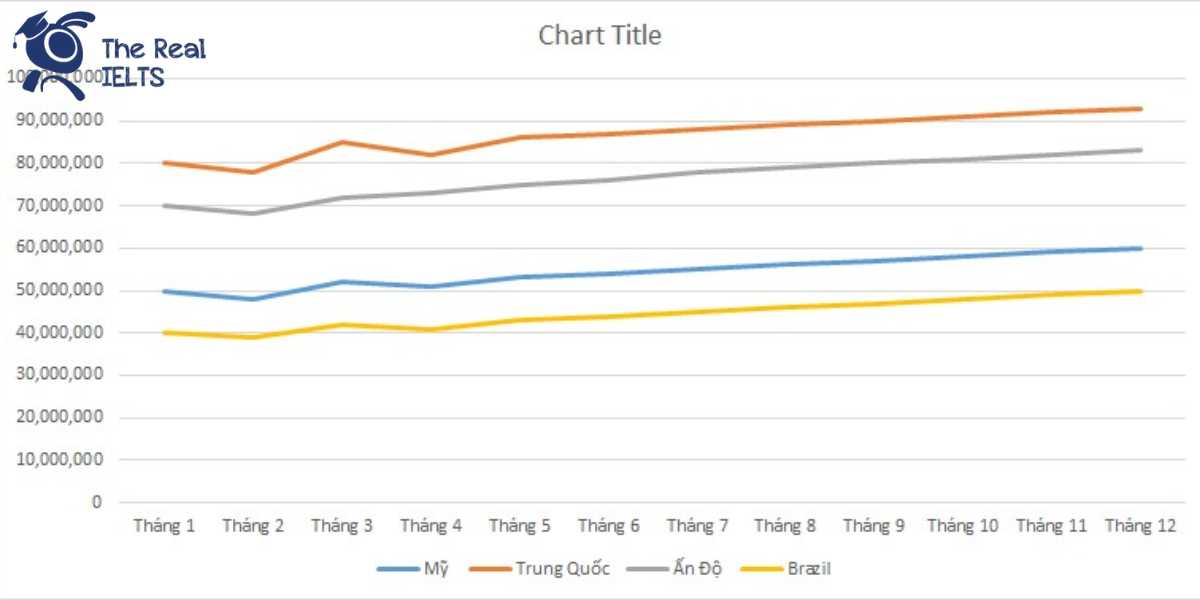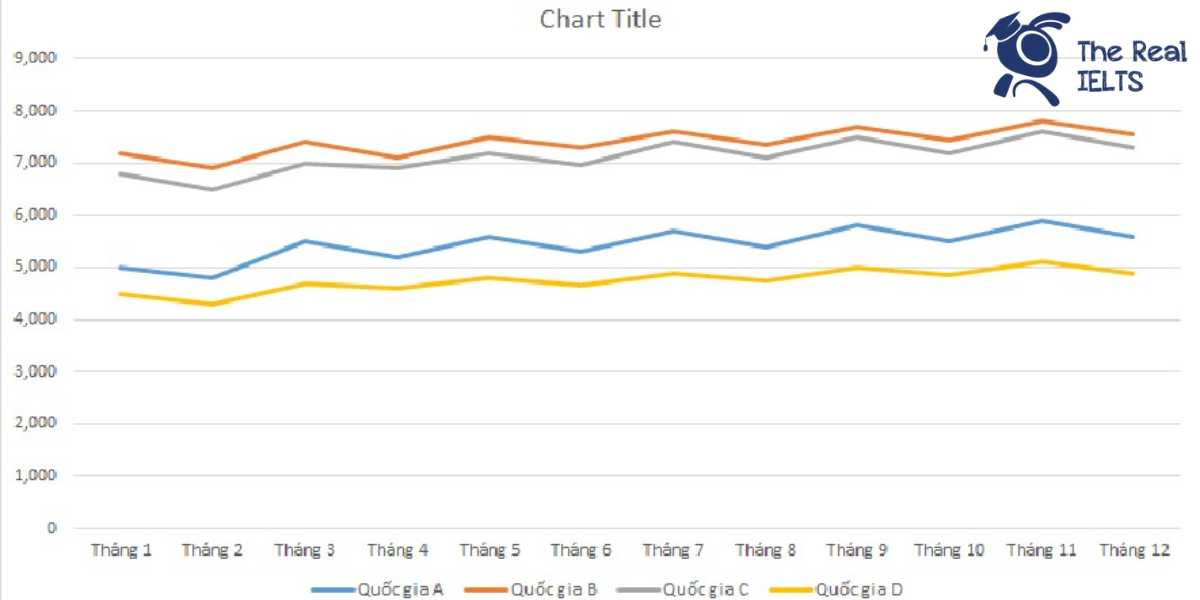Kỹ năng viết trong kỳ thi IELTS luôn là thách thức lớn đối với thí sinh, đặc biệt ở IELTS Writing Task 2 Phần 81, nơi yêu cầu phân tích vấn đề và trình bày luận điểm mạch lạc. Để đạt band điểm cao, người học cần nắm vững cấu trúc bài viết, sử dụng vốn từ học thuật phong phú và phát triển ý tưởng logic. Hiểu rõ tiêu chí chấm điểm và luyện tập có chiến lược sẽ giúp thí sinh tự tin chinh phục mục tiêu.
Đọc thêm: IELTS Writing Task 2 Phần 80
Đề 1 IELTS Writing Task 2
Some people believe that governments should invest more in public transportation to reduce traffic congestion and pollution. Others argue that improving road infrastructure is a better solution. Discuss both views and give your opinion.
Bài essay (Band 6.5)
Public transportation and road infrastructure are often debated as solutions to traffic congestion and pollution. While both approaches have merits, I believe that investing in public transport is more effective.
On the one hand, supporters of improving road infrastructure argue that it directly addresses traffic issues. Wider roads and better highways can accommodate more vehicles, reducing delays during peak hours. For example, cities like Los Angeles have expanded highways, which temporarily eased traffic flow. Additionally, better roads can enhance safety by reducing accidents caused by poor conditions. However, this solution may not be sustainable, as more roads often encourage more car use, leading to increased pollution.
On the other hand, investing in public transportation offers long-term benefits. Efficient systems like trains and buses can carry large numbers of passengers, reducing the number of private cars on the road. For instance, cities like Tokyo have reliable subway systems that significantly cut down traffic and emissions. Moreover, public transport is often more affordable, making it accessible to a larger population. Although initial costs for infrastructure are high, the environmental impact is far less compared to road expansion.
In my opinion, public transportation is the better option because it tackles both congestion and pollution more effectively. While road improvements provide short-term relief, they do not address the root causes of traffic issues. Therefore, governments should prioritize sustainable solutions like public transport to create cleaner and less crowded cities.
In conclusion, although improving roads has some advantages, investing in public transportation is a more practical approach to solving traffic and environmental problems.
Chấm điểm (4 tiêu chí)
Task Response: 6.5
The essay addresses both views and provides a clear opinion, with relevant examples (e.g., Los Angeles, Tokyo). However, the discussion lacks depth in analyzing the drawbacks of public transport or the long-term effects of road improvements, which limits it to Band 6.5.
Coherence and Cohesion: 6.5
The essay is logically organized with clear paragraphing and linking words (e.g., “On the one hand,” “Moreover”). However, transitions between ideas could be smoother, and some points feel repetitive (e.g., pollution mentioned multiple times without elaboration).
Lexical Resource: 6.5
The vocabulary is appropriate, with some academic phrases (e.g., accommodate more vehicles, long-term benefits). However, word choice is occasionally repetitive (e.g., “traffic” used frequently), and there is limited use of higher-level vocabulary to demonstrate range.
Grammatical Range and Accuracy: 6.5
The essay uses a variety of sentence structures, including complex sentences. There are minor errors (e.g., article misuse, verb tense consistency), but they do not impede understanding. More advanced structures could elevate the score.
Phân tích từ vựng
- accommodate more vehicles
- Nghĩa tiếng Việt: Chứa đựng thêm nhiều phương tiện.
- Giải thích: Cụm từ này mang tính học thuật, thường dùng để chỉ khả năng của cơ sở hạ tầng (như đường xá) đáp ứng nhu cầu giao thông. Trong bài, nó được dùng để mô tả lợi ích của việc mở rộng đường.
- enhance safety
- Nghĩa tiếng Việt: Tăng cường an toàn.
- Giải thích: Đây là cụm từ trang trọng, thường xuất hiện trong văn viết học thuật để nói về cải thiện điều kiện (như an toàn giao thông). Nó được dùng để nhấn mạnh lợi ích của đường tốt hơn.
- long-term benefits
- Nghĩa tiếng Việt: Lợi ích lâu dài.
- Giải thích: Cụm từ này phổ biến trong IELTS khi thảo luận về giải pháp bền vững. Trong bài, nó nhấn mạnh ưu điểm của giao thông công cộng so với mở rộng đường.
- carry large numbers
- Nghĩa tiếng Việt: Chở số lượng lớn.
- Giải thích: Cụm này phù hợp khi nói về khả năng vận chuyển của phương tiện công cộng. Nó mang tính mô tả và học thuật, dùng để so sánh với xe cá nhân.
- environmental impact
- Nghĩa tiếng Việt: Tác động môi trường.
- Giải thích: Một cụm từ quan trọng trong các bài viết về môi trường, thể hiện tính học thuật. Trong bài, nó được dùng để chỉ ảnh hưởng của giao thông công cộng lên ô nhiễm.
- prioritize sustainable solutions
- Nghĩa tiếng Việt: Ưu tiên các giải pháp bền vững.
- Giải thích: Cụm từ này mang tính học thuật cao, thường dùng để kêu gọi hành động dài hạn. Trong bài, nó thể hiện quan điểm cá nhân về giao thông công cộng.
- practical approach
- Nghĩa tiếng Việt: Cách tiếp cận thực tế.
- Giải thích: Cụm này dùng để đánh giá một giải pháp khả thi, phù hợp với văn phong IELTS. Trong bài, nó nhấn mạnh giao thông công cộng là lựa chọn hợp lý.
Phân tích ngữ pháp
- complex sentences
- Giải thích tiếng Việt: Câu phức được dùng đúng trong bài, ví dụ: “Although initial costs for infrastructure are high, the environmental impact is far less compared to road expansion.” Tuy nhiên, số lượng câu phức còn hạn chế, và một số câu có thể được diễn đạt tinh tế hơn để đạt Band 7.
- article misuse
- Giải thích tiếng Việt: Có một số lỗi nhỏ về mạo từ, ví dụ: “the environmental impact is far less” đúng, nhưng trong một số trường hợp khác, mạo từ “the” bị lặp không cần thiết (e.g., “the root causes of traffic issues”). Cần chú ý ngữ cảnh để dùng mạo từ chính xác hơn.
- verb tense consistency
- Giải thích tiếng Việt: Bài viết giữ được tính nhất quán về thì (chủ yếu là hiện tại đơn), nhưng có một số chỗ chuyển thì không rõ ràng, như “have expanded highways, which temporarily eased traffic flow” (quá khứ đơn nhưng thiếu ngữ cảnh thời gian cụ thể).
- linking words
- Giải thích tiếng Việt: Các từ nối như “Moreover,” “However,” “Therefore” được dùng đúng, giúp bài mạch lạc. Tuy nhiên, việc lặp lại “However” và thiếu các từ nối phức tạp hơn (e.g., “In contrast,” “As a result”) làm hạn chế điểm Coherence.
- subject-verb agreement
- Giải thích tiếng Việt: Có một số lỗi nhỏ về sự hòa hợp chủ ngữ-động từ, ví dụ: “better roads can enhance safety” là đúng, nhưng cần đảm bảo không nhầm lẫn khi viết nhanh (dù bài này không có lỗi rõ ràng).
Tổng kết & gợi ý cải thiện
Tổng kết: Bài viết đạt Band 6.5 nhờ cấu trúc rõ ràng, lập luận cân đối, và sử dụng từ vựng học thuật phù hợp. Tuy nhiên, nó chưa đạt Band 7 do thiếu sự phân tích sâu hơn về nhược điểm của giao thông công cộng, từ vựng lặp lại, và một số lỗi ngữ pháp nhỏ. Coherence cũng có thể cải thiện bằng cách dùng từ nối đa dạng hơn.
Gợi ý cải thiện:
- Task Response: Đi sâu vào nhược điểm của cả hai giải pháp (ví dụ: chi phí bảo trì giao thông công cộng hoặc vấn đề quá tải) để thể hiện phân tích toàn diện.
- Coherence and Cohesion: Sử dụng các từ nối phức tạp hơn như “Conversely,” “Subsequently” và tránh lặp từ như “traffic.”
- Lexical Resource: Thay thế các từ lặp bằng từ đồng nghĩa (e.g., “congestion” → “gridlock,” “pollution” → “emissions”) và dùng cụm từ Band 7 như “mitigate adverse effects.”
- Grammatical Range: Tăng cường câu phức và câu ghép, đồng thời kiểm tra kỹ mạo từ và thì động từ.
Đề 2 IELTS Writing Task 2
Some people believe that the best way to encourage children to study is to reward them for good grades. Others think that children should be encouraged to study for the sake of learning itself. Discuss both views and give your own opinion.
Bài essay (Band 6.5)
It is widely debated whether children should be motivated to study through rewards for good grades or for the intrinsic value of learning. This essay will discuss both perspectives and present my view that a combination of both approaches is most effective.
On the one hand, rewarding children for high grades can be a powerful incentive. Many children are motivated by tangible rewards, such as gifts or pocket money, which encourage them to work harder. For instance, a student who receives a new toy for scoring well may feel more driven to study consistently. This method can also instill a sense of achievement, as children associate effort with positive outcomes. However, relying solely on rewards might make children focus only on grades rather than understanding the material, which could limit their long-term academic growth.
On the other hand, encouraging children to study for the sake of learning promotes a deeper appreciation for knowledge. When children are taught to value learning itself, they are more likely to develop lifelong learning habits. For example, a child who enjoys reading about science may pursue it out of curiosity, leading to better academic outcomes in the future. Nevertheless, this approach may not work for all children, especially those who lack initial interest in studying.
In my opinion, a balanced approach is best. Rewards can motivate initial effort, while fostering a love for learning ensures sustained interest. By combining both, children can achieve both short-term success and long-term intellectual growth.
In conclusion, while rewards can drive children to study, encouraging intrinsic motivation is equally important. A blend of both methods is the most effective way to inspire children academically.
Chấm điểm (4 tiêu chí)
Task Response: 6.5
The essay addresses both views and provides a clear opinion, meeting the task requirements. The arguments are relevant, with examples, but the discussion lacks depth in exploring the implications of each approach, which prevents a higher score.
Coherence and Cohesion: 6.5
The essay is logically organized with clear paragraphs and linking words (e.g., “On the one hand,” “However”). Transitions are generally effective, but some ideas could be connected more smoothly to enhance flow, limiting the score to 6.5.
Lexical Resource: 6.5
The vocabulary is appropriate with some academic phrases (e.g., “powerful incentive,” “instill a sense of achievement”). However, word choice is sometimes repetitive, and more variety or precision could push it to Band 7.
Grammatical Range and Accuracy: 6.5
The essay uses a range of sentence structures, including complex sentences, with generally accurate grammar. Minor errors (e.g., article misuse, word form) do not impede communication but prevent a higher score.
Phân tích từ vựng
- Powerful incentive
- Nghĩa tiếng Việt: Động lực mạnh mẽ
- Giải thích: Cụm từ này chỉ một yếu tố khuyến khích hành động, thường dùng trong ngữ cảnh học thuật để mô tả động lực bên ngoài (external motivation). Trong bài, nó được dùng để chỉ phần thưởng thúc đẩy trẻ học.
- Instill a sense of achievement
- Nghĩa tiếng Việt: Gieo mầm cảm giác thành tựu
- Giải thích: Cụm này mang tính học thuật, dùng để nói về việc tạo ra cảm giác thành công hoặc tự hào. Trong bài, nó mô tả lợi ích của phần thưởng trong việc xây dựng sự tự tin cho trẻ.
- Sake of learning
- Nghĩa tiếng Việt: Vì giá trị của việc học
- Giải thích: Cụm từ này nhấn mạnh việc học vì mục đích bản thân, không vì phần thưởng. Nó thường xuất hiện trong các bài luận về giáo dục để nhấn mạnh động lực nội tại (intrinsic motivation).
- Lifelong learning habits
- Nghĩa tiếng Việt: Thói quen học tập suốt đời
- Giải thích: Cụm từ học thuật, dùng để chỉ việc duy trì sự tò mò và học hỏi trong suốt cuộc đời. Trong bài, nó nhấn mạnh lợi ích dài hạn của việc yêu thích học tập.
- Motivate initial effort
- Nghĩa tiếng Việt: Khuyến khích nỗ lực ban đầu
- Giải thích: Cụm này chỉ việc tạo động lực để bắt đầu một hành động. Trong ngữ cảnh bài viết, nó ám chỉ phần thưởng giúp trẻ bắt đầu học tập.
Phân tích ngữ pháp
- Complex sentences
- Giải thích tiếng Việt: Câu phức được dùng trong bài, ví dụ: “For instance, a student who receives a new toy for scoring well may feel more driven to study consistently.” Cấu trúc này kết hợp mệnh đề chính và phụ, thể hiện quan hệ nhân quả. Tuy nhiên, bài viết chưa sử dụng đa dạng các loại câu phức (e.g., câu điều kiện, câu so sánh), làm hạn chế điểm số.
- Article misuse
- Giải thích tiếng Việt: Trong bài, có lỗi nhỏ về mạo từ, ví dụ: “a sense of achievement” là đúng, nhưng nếu viết sai thành “the sense of achievement” trong một số ngữ cảnh sẽ không tự nhiên. Lỗi này không nghiêm trọng nhưng cần chú ý để đạt Band 7.
- Modal verbs (may, might)
- Giải thích tiếng Việt: Bài viết dùng “may” và “might” để diễn tả khả năng (e.g., “may feel more driven,” “might make children focus”). Cách dùng đúng nhưng lặp lại nhiều, thiếu sự đa dạng với các cấu trúc khác như “could” hoặc câu giả định.
Tổng kết & gợi ý cải thiện
The essay achieves a solid Band 6.5, with clear arguments, appropriate vocabulary, and generally accurate grammar. However, it falls short of Band 7 due to limited depth in discussing the implications of each approach, repetitive vocabulary, and minor grammatical inaccuracies.
Gợi ý cải thiện để đạt Band 7:
- Task Response: Develop arguments further by exploring long-term consequences (e.g., how over-reliance on rewards might affect creativity).
- Coherence and Cohesion: Use a wider range of cohesive devices (e.g., “consequently,” “in contrast”) to improve flow.
- Lexical Resource: Incorporate more varied academic vocabulary (e.g., “foster intrinsic motivation” instead of repeating “encourage”).
- Grammatical Range: Use more diverse structures, such as conditional sentences (“If children are rewarded, they might…”) or passive voice for variety.
Đề 3 IELTS Writing Task 2
Some people believe that governments should invest more in public transportation to reduce traffic congestion and pollution. Others argue that building more roads is a better solution. Discuss both views and give your own opinion.
Bài essay (Band 6.5)
In recent years, traffic congestion and pollution have become serious problems in many cities. Some people argue that governments should prioritize public transportation, while others believe that constructing more roads is more effective. This essay will discuss both perspectives and present my own view.
On the one hand, supporters of public transportation claim that it can significantly reduce traffic jams and environmental issues. By improving buses, trains, and subways, governments can encourage people to use these services instead of private cars. For instance, cities like Singapore have efficient public transport systems, which help decrease the number of vehicles on the road. Moreover, public transport is more environmentally friendly because it produces less pollution per person compared to cars. Therefore, investing in this area can address both congestion and air quality problems.
On the other hand, some people argue that building more roads is a better way to solve traffic problems. They believe that wider roads and new highways can accommodate more vehicles, thus reducing delays. For example, in some developing countries, new road projects have temporarily eased traffic flow. However, this solution may not be sustainable, as more roads often lead to more cars, which worsens pollution in the long term.
In my opinion, public transportation is the better option. It not only reduces traffic and pollution but also promotes sustainable development. Governments should focus on affordable and reliable transport systems to benefit both citizens and the environment.
In conclusion, while building roads may provide short-term relief, investing in public transportation is a more effective and sustainable solution to traffic and pollution problems.
Chấm điểm (4 tiêu chí)
Task Response: 6.5
The essay addresses both views and provides a clear opinion, meeting the task requirements. However, the arguments lack depth, with examples (e.g., Singapore) being brief and not fully developed. The conclusion restates the opinion but does not add new insights, limiting the score to 6.5.
Coherence and Cohesion: 6.5
The essay is logically organized with a clear introduction, body paragraphs, and conclusion. Linking words like “moreover” and “however” are used appropriately, but transitions between ideas (e.g., from roads to public transport) could be smoother. Some repetition of ideas reduces cohesion slightly.
Lexical Resource: 6.5
The vocabulary is appropriate for Band 6.5, with academic phrases like environmentally friendly and sustainable development. However, word choice is sometimes repetitive (e.g., “traffic” and “pollution” appear frequently), and there is limited use of higher-level synonyms or collocations.
Grammatical Range and Accuracy: 6.5
The essay uses a mix of simple and complex sentences, such as conditional sentences and comparative structures. Minor errors, like “produces less pollution per person” (awkward phrasing), do not impede meaning but prevent a higher score. Accuracy is generally good but not consistently precise.
Phân tích từ vựng
- Environmentally friendly
- Nghĩa tiếng Việt: Thân thiện với môi trường
- Giải thích: Cụm từ này thường dùng trong văn học thuật để mô tả các giải pháp hoặc sản phẩm giảm tác động xấu đến môi trường. Trong bài, nó được dùng để nhấn mạnh lợi ích của giao thông công cộng. Cụm này phù hợp với Band 6–7 vì tính học thuật và phổ biến trong chủ đề môi trường.
- Sustainable development
- Nghĩa tiếng Việt: Phát triển bền vững
- Giải thích: Đây là thuật ngữ học thuật dùng để chỉ các chính sách hoặc hành động đảm bảo lợi ích lâu dài cho xã hội và môi trường. Trong bài, cụm này xuất hiện ở đoạn ý kiến cá nhân, giúp tăng tính thuyết phục nhưng cần được giải thích thêm để đạt Band 7.
- Traffic congestion
- Nghĩa tiếng Việt: Tắc nghẽn giao thông
- Giải thích: Cụm từ này phổ biến trong các bài IELTS về giao thông, mô tả tình trạng ùn tắc. Nó được dùng lặp lại trong bài, phù hợp với Band 6.5, nhưng để đạt Band 7, cần thay thế bằng các từ đồng nghĩa như “gridlock” hoặc “traffic jams” ở một số chỗ.
- Accommodate more vehicles
- Nghĩa tiếng Việt: Chứa được nhiều phương tiện hơn
- Giải thích: Cụm từ này mang tính học thuật, dùng để diễn tả khả năng của đường sá trong việc đáp ứng số lượng xe. Nó phù hợp với ngữ cảnh nhưng hơi đơn giản; Band 7 yêu cầu các cụm phức tạp hơn như “cater to increased traffic”.
- Short-term relief
- Nghĩa tiếng Việt: Giải pháp tạm thời
- Giải thích: Cụm này dùng để chỉ lợi ích không lâu dài của việc xây đường. Nó thể hiện khả năng phân tích vấn đề ở mức Band 6.5, nhưng để đạt Band 7, cần bổ sung các cụm như “temporary alleviation” hoặc giải thích sâu hơn.
Phân tích ngữ pháp
- Conditional sentences (e.g., “By improving buses, trains, and subways, governments can encourage people to use these services”)
- Giải thích tiếng Việt: Câu điều kiện (dạng 0/1) được dùng để diễn tả mối quan hệ nhân quả, phù hợp với văn học thuật. Trong bài, cấu trúc này đúng ngữ pháp và rõ nghĩa, nhưng chỉ xuất hiện một lần. Để đạt Band 7, cần dùng đa dạng hơn (e.g., câu điều kiện loại 2 hoặc 3).
- Comparative structures (e.g., “produces less pollution per person compared to cars”)
- Giải thích tiếng Việt: Cấu trúc so sánh với “less… than” hoặc “compared to” được dùng để so sánh giao thông công cộng và xe hơi. Tuy nhiên, cụm “per person” hơi vụng về, làm giảm độ tự nhiên. Band 7 yêu cầu diễn đạt mượt mà hơn, như “emits fewer pollutants per capita”.
- Passive voice (e.g., “new road projects have temporarily eased traffic flow”)
- Giải thích tiếng Việt: Thể bị động được dùng đúng để nhấn mạnh hành động (dự án đường bộ giảm ùn tắc). Cấu trúc này phù hợp Band 6.5, nhưng bài thiếu sự đa dạng trong cách dùng bị động hoặc chủ động linh hoạt để đạt Band 7.
- Minor error: awkward phrasing (e.g., “produces less pollution per person”)
- Giải thích tiếng Việt: Cụm này không sai ngữ pháp nhưng thiếu tự nhiên vì cách dùng “per person” không phổ biến trong ngữ cảnh này. Thay bằng “per passenger” hoặc “per individual” sẽ tăng độ chính xác và học thuật, giúp đạt Band 7.
Tổng kết & gợi ý cải thiện
Tổng kết: Bài essay đạt Band 6.5 nhờ cấu trúc rõ ràng, từ vựng phù hợp, và lập luận cơ bản. Tuy nhiên, các ý chưa được phát triển sâu, ví dụ thiếu chi tiết, và ngữ pháp chưa đa dạng. Một số lỗi nhỏ về cách diễn đạt cũng làm giảm độ thuyết phục.
Gợi ý cải thiện lên Band 7:
- Phát triển ý sâu hơn: Thêm ví dụ cụ thể (e.g., số liệu về giảm khí thải ở Singapore) hoặc giải thích tại sao xây đường không bền vững.
- Đa dạng từ vựng: Dùng từ đồng nghĩa như “gridlock” thay cho “traffic congestion” và các cụm Band 7 như “alleviate urban strain”.
- Cải thiện ngữ pháp: Sử dụng thêm câu điều kiện loại 2/3, câu phức với mệnh đề quan hệ, và tránh các cụm vụng về như “per person”.
- Mượt mà chuyển ý: Dùng các từ nối phức tạp hơn như “in contrast” hoặc “consequently” để tăng tính mạch lạc.
Đề 4 IELTS Writing Task 2
Some people believe that the government should spend more money on public transportation to reduce traffic congestion and pollution. Others argue that individuals should take responsibility for reducing their own carbon footprint. Discuss both views and give your own opinion.
Bài essay (Band 6.5)
In recent years, traffic congestion and pollution have become serious problems in many cities. While some believe that the government should invest more in public transportation to tackle these issues, others think individuals should take action to reduce their environmental impact. This essay will discuss both perspectives and present my own view.
On the one hand, supporters of government investment argue that public transportation is an effective solution to reduce traffic and pollution. By improving buses, trains, and subways, governments can encourage people to use these services instead of private cars. For example, cities like Singapore have well-developed public transport systems, which lead to less traffic and cleaner air. Moreover, building better infrastructure requires significant funding, which only governments can provide. Therefore, this approach could have a long-term impact on solving environmental problems.
On the other hand, some people believe individuals should be responsible for reducing their carbon footprint. They argue that personal actions, such as cycling, walking, or using electric vehicles, can make a difference. For instance, if more people choose to cycle to work, it would contribute to fewer emissions. However, this view assumes that everyone has the ability or motivation to change their habits, which may not always be true.
In my opinion, both sides have valid points, but I believe the government should take the lead. Public transportation is a more sustainable solution because it benefits the majority and ensures consistent results. Individuals can support this by making small changes, but government action is essential for real change.
In conclusion, while individual efforts are important, government investment in public transportation is the most effective way to reduce traffic congestion and pollution.
Chấm điểm (4 tiêu chí)
Task Response: 6.5
The essay addresses both views and provides a clear opinion, meeting the task requirements. The arguments are relevant, with examples like Singapore, but the discussion lacks depth in places (e.g., individual responsibility is underdeveloped). The conclusion is clear but slightly repetitive.
Coherence and Cohesion: 6.5
The essay is logically organized with a clear structure (introduction, body paragraphs, conclusion). Linking words like “moreover” and “however” are used appropriately, but transitions between ideas could be smoother. Some repetition of ideas reduces cohesion slightly.
Lexical Resource: 6.5
The vocabulary is appropriate for Band 6.5, with academic phrases like effective solution and carbon footprint. However, word choice is sometimes repetitive (e.g., “reduce” appears frequently), and there is limited use of higher-level vocabulary.
Grammatical Range and Accuracy: 6.5
The essay uses a mix of simple and complex sentences, such as conditional clauses and relative clauses. There are minor errors (e.g., “which lead to” should be “which leads to”), but they do not impede understanding. More variety in sentence structures would improve the score.
Phân tích từ vựng
- Effective solution
- Nghĩa tiếng Việt: Giải pháp hiệu quả
- Giải thích: Cụm từ này thường dùng trong văn học thuật để chỉ một cách giải quyết vấn đề mang lại kết quả tốt. Trong bài, nó được dùng để nhấn mạnh vai trò của giao thông công cộng trong việc giảm ùn tắc giao thông.
- Well-developed
- Nghĩa tiếng Việt: Được phát triển tốt
- Giải thích: Dùng để mô tả một hệ thống hoặc cơ sở hạ tầng đạt tiêu chuẩn cao. Trong bài, cụm từ này mô tả hệ thống giao thông công cộng ở Singapore, phù hợp với ngữ cảnh học thuật.
- Long-term impact
- Nghĩa tiếng Việt: Tác động lâu dài
- Giải thích: Cụm từ này được dùng để chỉ những kết quả bền vững trong tương lai. Nó phù hợp khi thảo luận về lợi ích của đầu tư chính phủ trong bài viết.
- Carbon footprint
- Nghĩa tiếng Việt: Dấu chân carbon
- Giải thích: Thuật ngữ học thuật dùng để chỉ lượng khí thải carbon dioxide mà một cá nhân hoặc tổ chức tạo ra. Trong bài, nó được dùng để nói về trách nhiệm cá nhân với môi trường.
- Contribute to
- Nghĩa tiếng Việt: Đóng góp vào
- Giải thích: Cụm động từ này dùng để chỉ hành động giúp đạt được một mục tiêu chung. Trong bài, nó mô tả việc đi xe đạp giúp giảm khí thải, phù hợp với văn nghị luận.
- Sustainable solution
- Nghĩa tiếng Việt: Giải pháp bền vững
- Giải thích: Dùng để chỉ giải pháp có thể duy trì lâu dài mà không gây hại. Trong bài, cụm từ này nhấn mạnh lợi ích của giao thông công cộng.
Phân tích ngữ pháp
- Conditional clauses
- Giải thích tiếng Việt: Câu điều kiện (e.g., “If more people choose to cycle to work, it would contribute to fewer emissions”) được dùng đúng trong bài để trình bày giả định. Tuy nhiên, bài viết chỉ dùng câu điều kiện loại 2, thiếu sự đa dạng với loại 1 hoặc 3, làm hạn chế điểm ngữ pháp.
- Relative clauses
- Giải thích tiếng Việt: Mệnh đề quan hệ (e.g., “which lead to less traffic”) được dùng để bổ sung thông tin. Tuy nhiên, có lỗi nhỏ: “which lead to” nên là which leads to vì chủ ngữ “systems” là số nhiều nhưng động từ cần phù hợp với danh từ chính.
- Passive voice
- Giải thích tiếng Việt: Câu bị động (e.g., “can be encouraged”) được dùng phù hợp để nhấn mạnh hành động hơn chủ thể. Tuy nhiên, bài viết thiếu sự kết hợp với các cấu trúc chủ động phức tạp hơn, làm giảm tính đa dạng.
- Article usage
- Giải thích tiếng Việt: Mạo từ (e.g., “the government” và “public transportation”) được dùng chính xác trong hầu hết trường hợp. Tuy nhiên, có một số chỗ thiếu mạo từ, như “building better infrastructure requires significant funding” có thể rõ hơn nếu viết “the building of better infrastructure”.
Tổng kết & gợi ý cải thiện
Tổng kết: Bài viết đạt Band 6.5 nhờ cấu trúc rõ ràng, từ vựng học thuật phù hợp, và lập luận đáp ứng yêu cầu đề bài. Tuy nhiên, các hạn chế bao gồm thiếu sự phát triển sâu cho một số ý (đặc biệt là phần trách nhiệm cá nhân), lặp từ, và một số lỗi ngữ pháp nhỏ.
Gợi ý cải thiện để đạt Band 7:
- Phát triển ý sâu hơn: Thêm ví dụ hoặc giải thích chi tiết hơn cho quan điểm về trách nhiệm cá nhân, ví dụ: nêu thách thức thực tế khi thay đổi thói quen cá nhân.
- Đa dạng từ vựng: Tránh lặp từ như “reduce” bằng cách dùng từ đồng nghĩa (e.g., “mitigate”, “alleviate”).
- Tăng độ phức tạp ngữ pháp: Sử dụng thêm câu điều kiện loại 1 hoặc 3, hoặc kết hợp mệnh đề phụ thuộc phức tạp hơn.
- Sửa lỗi nhỏ: Chú ý các lỗi như which leads to và mạo từ để tăng độ chính xác.
- Cải thiện cohesion: Dùng các từ nối đa dạng hơn (e.g., “in addition” thay vì “moreover”) và đảm bảo mỗi ý liên kết chặt chẽ với ý tiếp theo.


